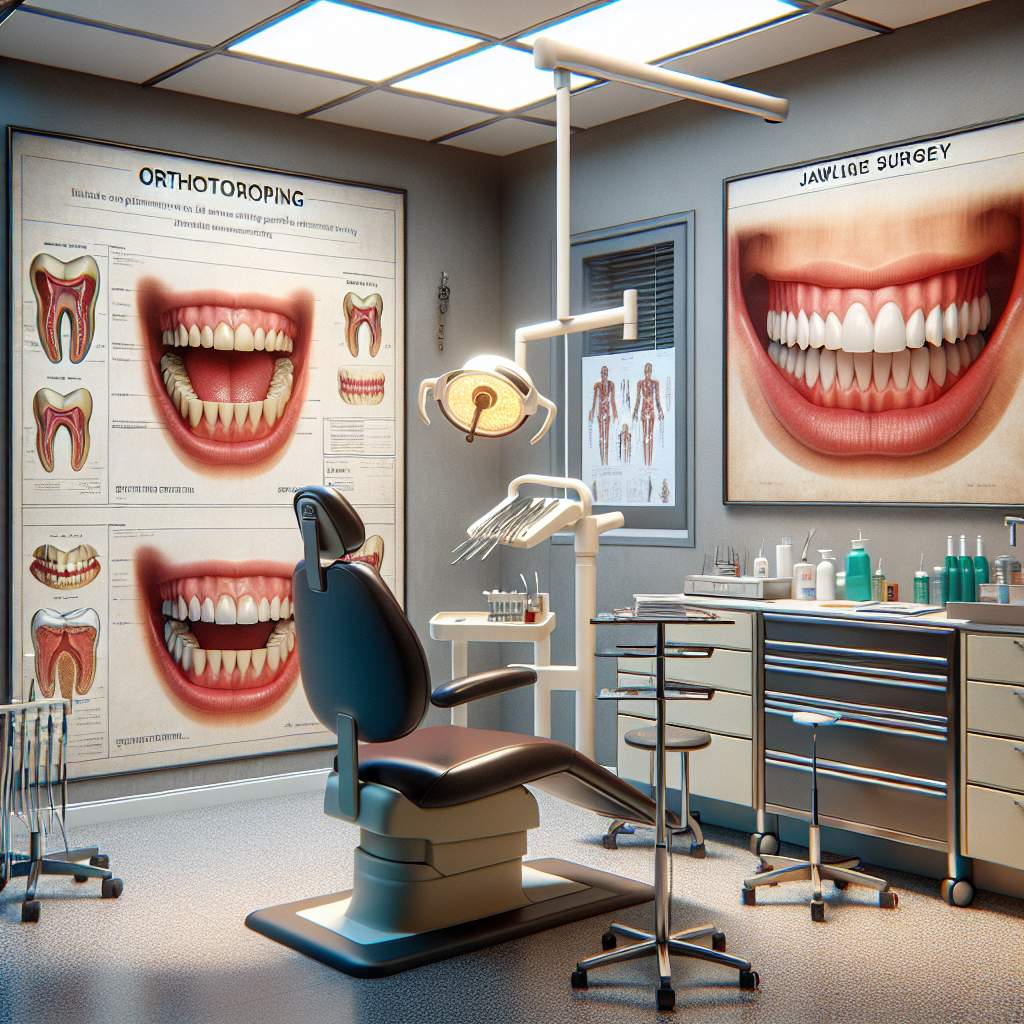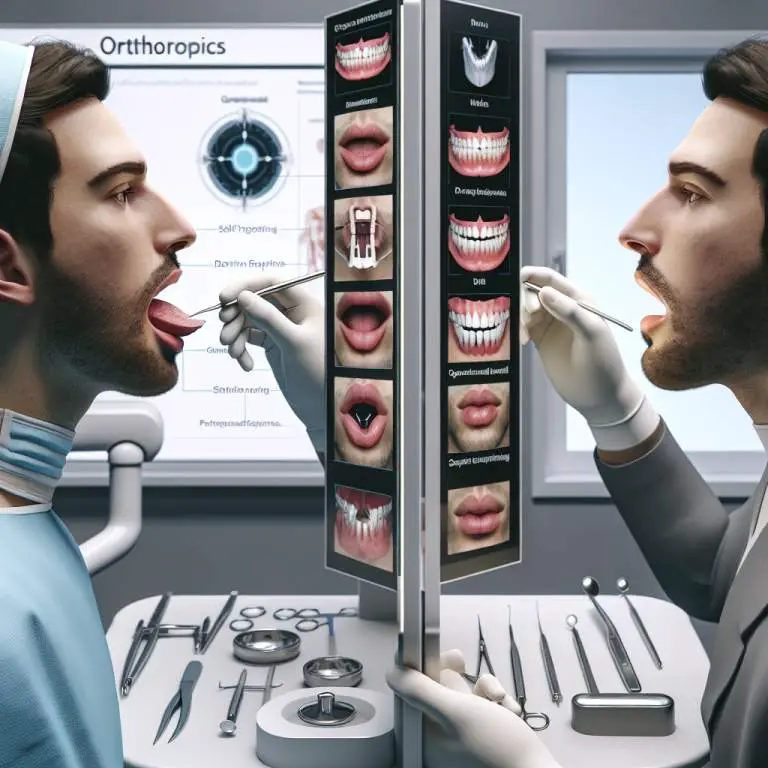How does mewing compare to jawline surgery in terms of results?
Mewing and jawline surgery offer different results for enhancing the jawline. Mewing, a technique of proper tongue posture, can gradually shape the jawline over time but requires patience and consistency. In contrast, jawline surgery provides immediate and more noticeable changes to the jaw’s appearance. However, surgery comes with higher risks and costs compared to the non-invasive mewing method.

How does mewing work to enhance the jawline?
Mewing is a technique that involves placing your tongue against the roof of your mouth. This position is supposed to help shape and define your jawline over time. The idea is that by keeping your tongue in this specific spot, you’re using muscles in a way that can make changes to how your jaw looks.
People who teach mewing say it’s all about how you hold your mouth and tongue, even when you’re not thinking about it. If you do it right and keep doing it, the muscles around your jaw and neck might get stronger. This could lead to a sharper, more defined jawline that many people find attractive.
What are the potential benefits of mewing over time?
Besides possibly making your jawline look better, mewing might have other benefits too. Some folks believe it can improve breathing and even change how your face looks overall. By encouraging good posture for your tongue and mouth, mewing could help with things like snoring or trouble sleeping.
Another possible plus is better dental health. When you’re mewing correctly, it might help keep your teeth aligned and reduce the risk of problems down the road. It’s like giving yourself a little bit of orthodontic care without having to see a dentist or wear braces.
Can mewing provide results comparable to jawline surgery?
Mewing and jawline surgery are very different things. Surgery changes the shape of your jaw through medical procedures, which can give dramatic results pretty quickly. Mewing, on the other hand, relies on small changes over a long period of time.
While some people say they’ve seen big improvements from mewing, it’s not likely to give results as noticeable or as fast as surgery would. It’s more about subtle shifts than big transformations. For those looking for a significant change in their appearance without medical intervention, patience with mewing is key.
What are the limitations of mewing in jawline enhancement?
Mewing isn’t a magic solution for everyone wanting a sharper jawline. One limitation is that it takes a lot of time and consistency. You have to do it correctly all day long for months or even years to maybe see changes. Not everyone finds this easy or worthwhile.
Also, because everyone’s face and body are different, what works well for one person might not work at all for another. There’s no guarantee that mewing will improve your jawline significantly if at all. Plus, if there are structural issues with someone’s bones or teeth alignment from birth, mewing alone probably won’t be enough to correct them.
| Feature | Mewing | Surgical Methods |
|---|---|---|
| Definition | A technique that involves proper tongue posture and jaw exercises. | Medical procedures to alter the shape of the jawline, such as implants or bone reshaping. |
| Cost | No cost, can be done at home. | High, varies depending on procedure and location. |
| Risks | Minimal to none when done correctly. | Potential for surgical complications, infection, dissatisfaction with results. |
| Timeframe for Results | Long-term; noticeable changes may take months to years. | Short-term; results are typically immediate but may require recovery time. |
| Efficacy | Varies widely; some report subtle improvements, others see no change. | Generally high; tailored procedures can significantly alter jawline appearance. |
| Durability of Results | Lasting if practices are maintained. | Tends to be permanent, though aging can affect outcomes. |
| Ideal Candidates | Individuals with patience and discipline for daily practice. | Candidates seeking significant changes and willing to undergo surgery.
What does jawline surgery entail and how does it alter the jawline?Jawline surgery, also known as jaw augmentation or mandibular enhancement, involves surgical procedures to reshape or enhance the lower part of the face. Surgeons may use implants or restructure the bone to achieve a more defined jawline. This type of surgery can significantly change a person’s appearance by creating a stronger, more pronounced jaw. The process often requires general anesthesia and can include various techniques depending on the desired outcome. For instance, some people might have silicone implants inserted to add definition, while others could undergo bone cutting and reshaping for a more dramatic transformation. The goal is to create balance and symmetry in the face. How do the risks of mewing compare to those of jawline surgery?Mewing, which involves positioning the tongue against the roof of the mouth to potentially reshape the jaw over time, carries minimal physical risk. It’s a natural method that relies on posture correction and muscle engagement. Since it doesn’t involve any invasive procedures, complications are rare when compared to surgical alternatives. In contrast, jawline surgery comes with several potential risks common to many surgical procedures. These can include infection, nerve damage, asymmetry, and reactions to anesthesia. Additionally, there’s always a chance that the results might not meet patient expectations, possibly requiring further corrective surgeries. What is the expected recovery time for jawline surgery versus time commitment for mewing?The recovery period following jawline surgery can vary but generally lasts from several weeks to a few months. Initially, patients may experience swelling, bruising, and discomfort which gradually subsides over time. Most people can return to their normal activities within two weeks but should avoid strenuous exercise for up to six weeks post-surgery. On the other hand, mewing is an ongoing practice without a definitive end point. Results from mewing are gradual and require consistent effort over months or even years. Since it’s non-invasive and part of daily habits like correct posture and tongue placement, there’s no recovery period involved. Final ThoughtsJawline surgery offers a quick but invasive option for those seeking significant changes in their facial structure. It provides immediate results but comes with higher risks and a longer recovery period compared to non-surgical methods like mewing. Mewing presents an alternative approach that emphasizes gradual improvement through natural means. While it demands patience and consistency without guaranteed outcomes, it avoids the complications associated with surgical interventions. Ultimately, choosing between these options depends on individual goals, preferences, and tolerance for risk. |






